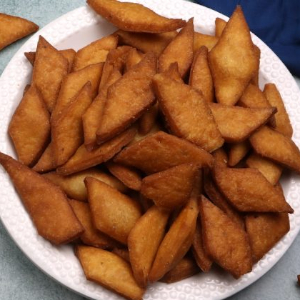Turkmenistan is, in many respects, representative of all the ‘stans’ in Western Central Asia. All high-desert locales with limited agricultural potential and relatively small populations. But as we’ve seen, that hasn’t stopped them from developing an intriguing national cookbook…
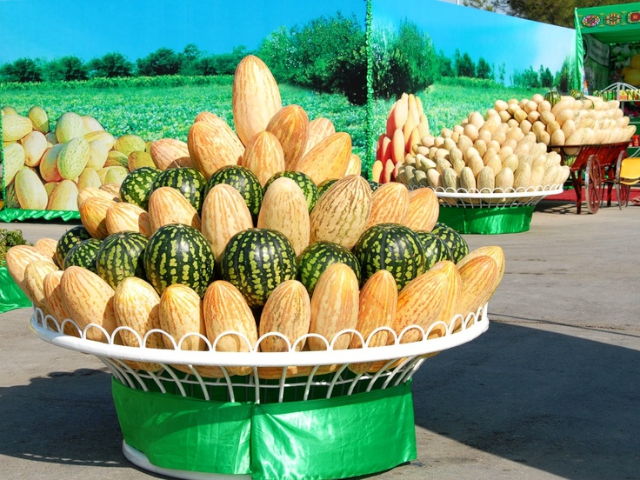 A display of plenty: Melon Day in Turkmenistan…
A display of plenty: Melon Day in Turkmenistan…
On our menu today
Following form established with its mains and breads, many Turkmen desserts and sweets are common to most of the nations of Central Asia. Among the most popular: halva, baklava and sherbet.
When it comes to beverages, Tea is king, followed by Camel’s milk. And, as we’ll learn, they do serve alcohol there…
Sweets and Desserts
Bekmes: Natural concentrated fruit juice or syrup. Sometimes referred to as ‘fruit honey’. It’s a popular dessert. Each region has its own recipe, taking advantage of the locally available fruits and berries.
Nabat: Remember those experiments you did as a kid, hanging cotton threads in a bowl of saturated sugar syrup? The nifty crystals that formed after a few days? In Turkmenistan, they call that ‘candy’. They also make them on lollypop sticks…
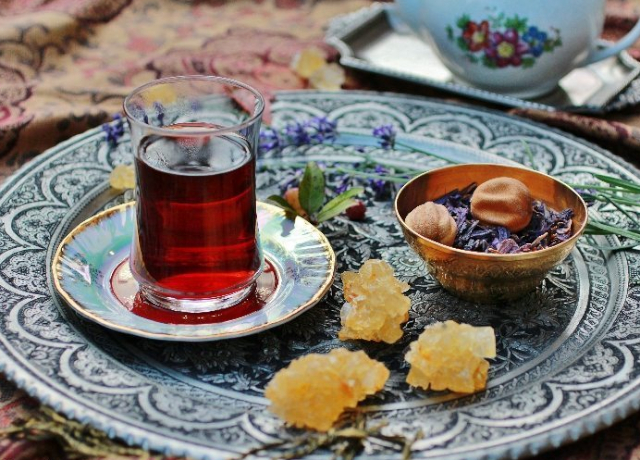
And they also use crystal loops and pops as sweeteners, the way we use sugar cubes. Everybody uses them, everybody loves them. They’re often made from concentrated fruit juice or syrup. So you get different colours and flavours! Some folks still believe Nabat has medicinal properties…
Pishme: Little shallow-fried, diamond-shaped pastries (see photo, top of page). The dough is composed of flour, sugar, salt, yeast and milk. They start out flat (about 1/2 cm or 3/32 in.) and puff up dramatically when cooked. These simple little sweets are favourites at special occasions such as weddings and baby showers.
Oreshki: Walnut Cookies. These special-occasion cookies are made with a ‘cakey’ shell composed of flour, eggs, sugar, baking powder and butter. Walnut-shell shaped molds are brushed with oil (or sprayed with PAM-type lubricant) and dough is pressed into them, leaving a space in the middle for filling.
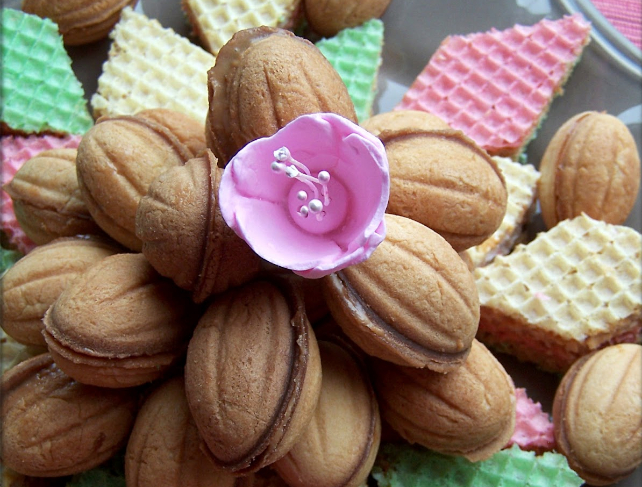
A simple but labour-intensive filling of boiled condensed milk and crushed walnuts is spooned into the ‘shell halves’ after they’ve cooled, and a little extra is used to glue the shells together.
Chapada: Like crumpets; but often made in a large cake ‘the size of a dinner plate’. They’re fried, not baked. A favourite snack.
Melons: As we mentioned, fleetingly, in a previous post, Turkmenistan is legendary for its melons, and folks there favour them above all other fruits and berries for every-day consumption. Watermelon has a special place aside from the other varieties; they’re grown and found everywhere that they will grow. To recap: Turkmenistan was once the principle supplier of melons to the entire Soviet Union. They still grow upward of 400 distinct varieties. And they even celebrate their most famous produce with a Melon Day holiday.
Zebra Cake: Like a marble cake, often made in a round mold like a Bundt pan or a salad mold with a chimney in the centre. It’s a very rich recipe, calling for: 5 eggs; 3/4 cup of sugar; 3/4 cup of sour cream; vanilla; and 4 oz. / 115 g of unsalted butter.
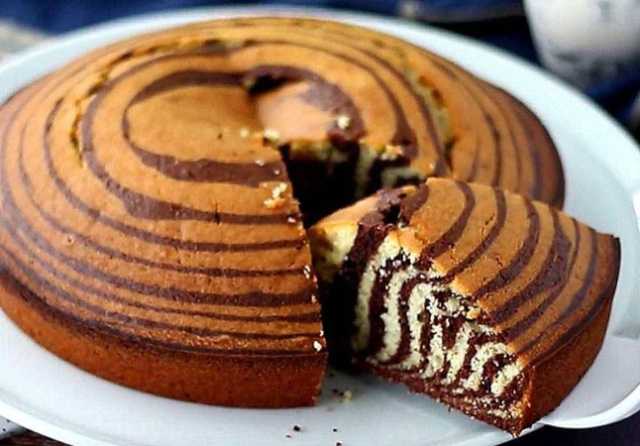
The batter is divided and one half is dosed with 1 tbsp. / 15 ml of cocoa powder. It’s traditionally f8inished with icing, but you can eat it plain if you want.
Beverages
Let’s open this topic with an overarching observation: Turkmenistan is an Islamic country based on Islamic religious rules and cultural norms. But you will find alcoholic beverages if you’re travelling there. Unusualtraveler.com explains:
“Turkmenistan [is] the strange country in Central Asia, home to some of the world’s most bizarre rules and laws and the Gate To Hell, but Turkmenistan is also a very liberal country when it comes to alcohol. Which might surprise some people since Turkmenistan is mostly a Muslim country with more than 90 percent of the population being Muslims. […] [As of January 2021,] alcohol sales [are] banned […] outside Restaurants and bars on Saturdays and Sundays.
“The drinking age in Turkmenistan been raised from 18 to 21 and drinking [is] illegal in city parks, public squares, forests, beaches, train stations, airports, seaports, government offices, underpasses and elevators.”
So…
Green Tea: The quaff of choice for just about everyone in Turkmenistan, any time of day, any day of the week, any season of the year. In its simplest form, just loose green tea and boiling water.
Black Tea: Mostly drunk in the colder months, often brewed with fresh camel’s milk over hot coals.
Milk: Camel, sheep and cow. I don’t want to get into the details of milking camels, but I imagine it requires a pretty tall stool…
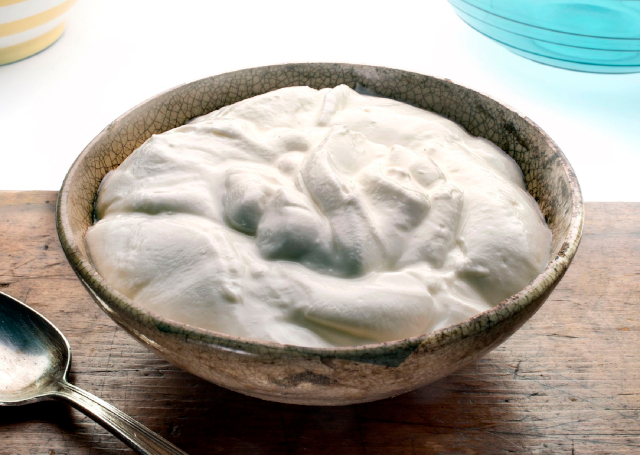
Less-common cow’s milk is used to make Turkmen a drinkable yogurt called gatyk (pictured above). It comes as thick as sour cream, and is used as a dressing or condiment.
Chal: Fermented Camel’s Milk. It’s commonly served at breakfast. According to Food In Turkmenistan, “An early morning glass of breakfast chal in Turkmenistan is said to wake you up faster than a double espresso.”
Fruit Juices: We’ve already mentioned Bekmes, a fruit syrup. But Turkmenistanis also love plain fruit juices, much in the same way as juices are front-and-centre in most Islamic countries.
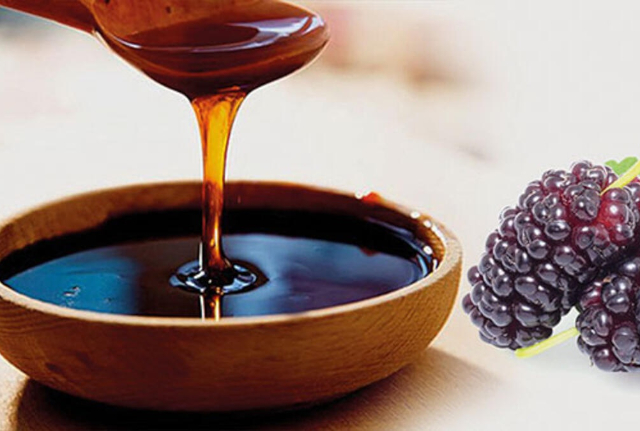
I refer you, at this point, to my comments earlier about Turkmen laws and regulations governing the sale and consumption of alcohol…
Vodka: By far the preferred alcoholic beverage in Turkmenistan. It’s cheap, easy to get and basically a fixture of Turkmen life.
Beer: All brands are domestic. The preferred style is a light Lager we would otherwise associate with Germany and other Central European nations.
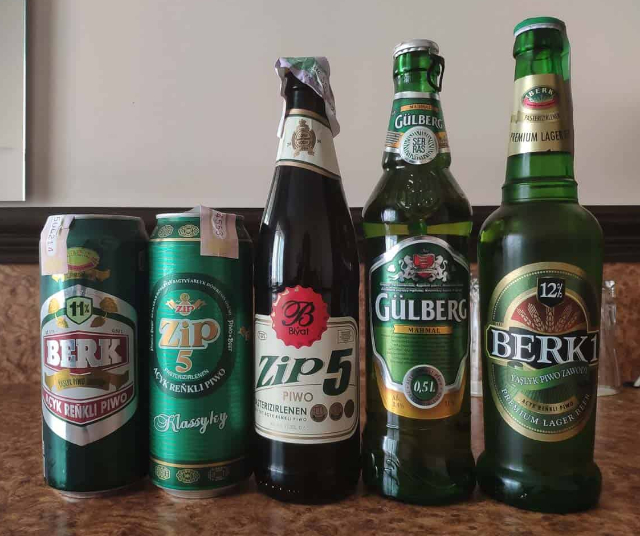
Alcohol content ranges between 3.2 and 4.4 percent. Not unusual at all. But the tasting ratings given by Unusualtraveller.com range only between 4 and 6 out of 10.
Wine: Turkmen wines are produced in abundance wherever grapes will grow. The grape industry also produces huge harvest of table grapes and Sultana raisins. Wine, brandy and sparkling wine are readily available in restaurants.
And that’s the final chapter..
… Of our expedition diary from Turkmenistan. Always another gustatory surprise around the next corner! You may not ever go to this exotic, distant land, but you can try its signature mains, sides and sweets! Most of the recipes are quick, easy and require few ingredients. Go on and give some a try!
~ Maggie J.

